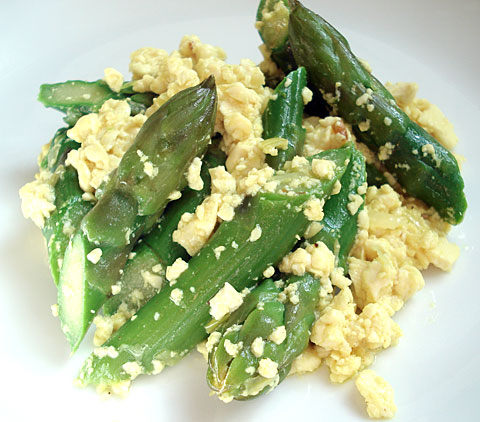
When I woke up this morning, it was snowing heavily! By mid-afternoon the sun was shining brightly and the snow had completely melted. Such is early spring. And speaking of early spring, it's asparagus time! The ones we are getting in the markets here now are from Spain, which is not totally local, but at least they're coming to us from on same continent.
Asparagus goes very well with eggs and egg-based sauces like hollandaise and mayonnaise, and scrambled eggs and asparagus is a classic dish. This is a vegan version, using scrambled tofu. Don't scoff at it until you've tried it - there are some ingredients in there that make it taste creamy and just slightly tangy, a perfect foil to the asparagus.
For speed purposes, use just the tips and tender stalk parts of fairly skinny spears for this.
This is also great for breakfast, piping hot with toast.